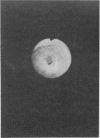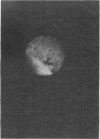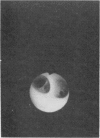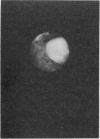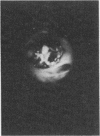Abstract
Surgical exploration of the common bile duct for gallstones is a common operation but carries a high residual stone rate. Conventional techniques for exploring the bile ducts are blind procedures. The surgeon cannot see what he is doing. Also there has been no reliable method for a postexploratory check of the bile ducts before closure, usually around a T-tube. Operative choledochoscopy allows the surgeon to see stones in the duct, may aid the removal of stones and provides visual postexploratory checks that the common bile duct and the hepatic ducts are clear, that papilla is patent and that no stone is left behind before closure. A personal series of 150 patients had operative choledochoscopy using a flexible fibreoptic choledochoscope. If there was a clear indication on preoperative investigations that the ducts should be explored, an operative cholangiogram was omitted and the choledochoscope used as the exploring instrument. In 127 patients with a diagnosis of gallstone disease, choledochoscopy was used at the primary operation. In 12 patients choledochoscopy was used at a secondary operation for recurrent gallstone disease, and 11 patients had malignant obstruction of the biliary tract. In 70 of the 127 patients, gallstones were found and extracted using the choledochoscope. In 53 patients the ducts were clear, and in 4, other lesions were found: 3 papillomas and one polycystic disease. One hundred and six of the patients had the common bile duct closed primarily with no T-tube drainage. There was no increase in complications and no deaths associated with choledochoscopy or primary closure of the common bile duct.(ABSTRACT TRUNCATED AT 250 WORDS)
Full text
PDF




Images in this article
Selected References
These references are in PubMed. This may not be the complete list of references from this article.
- Gartell P. C., McGinn F. P. Choledochoscopy: are stones missed? A controlled study. Br J Surg. 1984 Oct;71(10):767–769. doi: 10.1002/bjs.1800711010. [DOI] [PubMed] [Google Scholar]
- Heather B., Ashby B. S. Choledochoscopic appearance of hepatic ducts in polycystic disease of the liver. J R Soc Med. 1978 Jul;71(7):526–529. doi: 10.1177/014107687807100714. [DOI] [PMC free article] [PubMed] [Google Scholar]
- Longland C. J. Choledochoscopy in choledocholithiasis. Br J Surg. 1973 Aug;60(8):626–628. doi: 10.1002/bjs.1800600812. [DOI] [PubMed] [Google Scholar]
- SHORE J., LIPPMAN H. N. A FLEXIBLE CHOLEDOCHOSCOPE. Lancet. 1965 Jun 5;1(7397):1200–1201. [PubMed] [Google Scholar]
- WILDEGANS H. Endoskopie der tiefen Gallenwege. Langenbecks Arch Klin Chir Ver Dtsch Z Chir. 1953;276:652–657. [PubMed] [Google Scholar]




